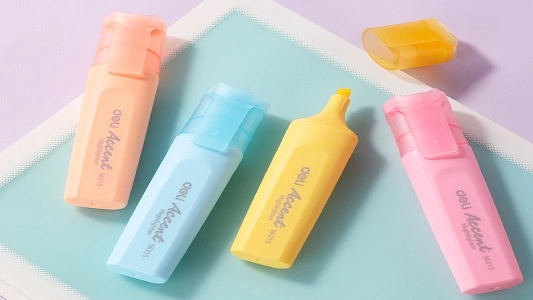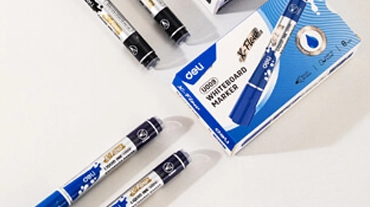People love them, protesters rely on them, and illustrators swear by them. What is this multifunctional tool? The markers! The uses for markers are endless. Their bold colors and lines make them ideal for writing messages on posters and making colorful drawings. For an artist, markers are invaluable. Known as art markers, these specialized markers are designed to achieve many of the same techniques as painting. Plus, they offer the convenience and control of a pen, but with the ability to make a wide variety of marks in different shades and widths. Today's art markers come in a ton of vibrant colors, including metallic, neon, and pastels. They can be layered and blended like paint, or produce smooth, solid lines. As more and more contemporary artists discover their ease of use and virtually unlimited color range, it's no surprise that art markers continue to rise in popularity.



A marker, also commonly called a felt-tip or flow, is a pen that has its ink source. These pens usually have a nib made of porous, pressed fibers such as felt. A typical permanent marker consists of a container and a core of absorbent material such as felt. The upper part of the marker contains the nib, which was earlier made of a stiff felt material, and the cap to prevent the marker from drying out. Until the early 1990s, the most common solvents used in inks were toluene and xylene. Both substances are harmful and have a very strong odor. Instead of these two materials, inks are usually based on alcohol now.
The materials to make a marker include those used in making the ink and the body components, such as the cap, tip, body, and ink reservoir. As for the ink, there are solvents, colorants, resins, additives, preservatives, and water. And for the body components, there are plastic, powder, water, polyester, and so on.
The specific process of marker manufacturing is as follows. First of all, choose the different but correct materials to make the markers' ink. Different materials will greatly affect the user experience of markers. Secondly, make the markers themselves which include a cap, tip, and body. All of these parts should be made independently.
Based on the differences between marker ink, usually, we can usually divide the makers into alcohol-based markers and water-based Markers. Therefore, what are the differences between these two?
Alcohol-Based Markers | Water-Based Markers | |
Ink Type | Alcohol-Based | Water-Based |
Cost | Affordable to Expensive | Mostly Cheap |
Hue Options | Fantastic Range | Limited Range |
Blend Ability | High | Low |
Drying time | Fast | Slow |
Permanency | High | Low |
Effect on Paper | Bleeds through Paper | May Warp Paper |
There's no trick to drawing with markers. All you need is a marker and a sheet of paper and you're ready to begin. Although you can start drawing right away with them, it's always a good idea to start with a light pencil sketch, as once you lay down your lines with the marker, you can't remove them. The amount of color you get depends on the amount of pressure applied to the tip. The more pressure applied, the darker and more saturated the color will be. For very light lines, apply less pressure.
As a leading stationery and office brand in China, Deli Group provides a lot of marker pen choices such as deli dry marker pens and fluorescent marker pens, and you can always choose the product you like on the relevant page. If you have been inspired by our markers, there's no time to just like now!




